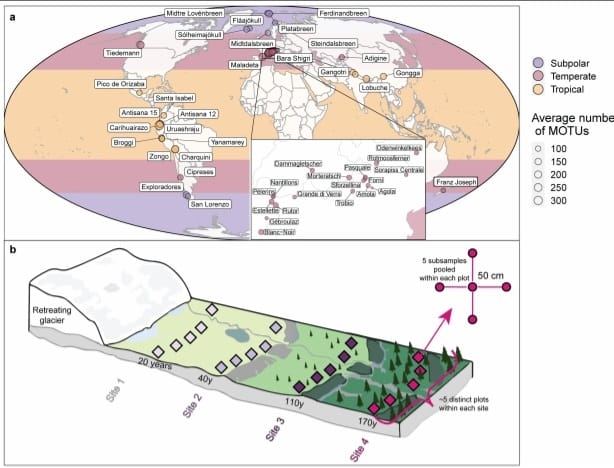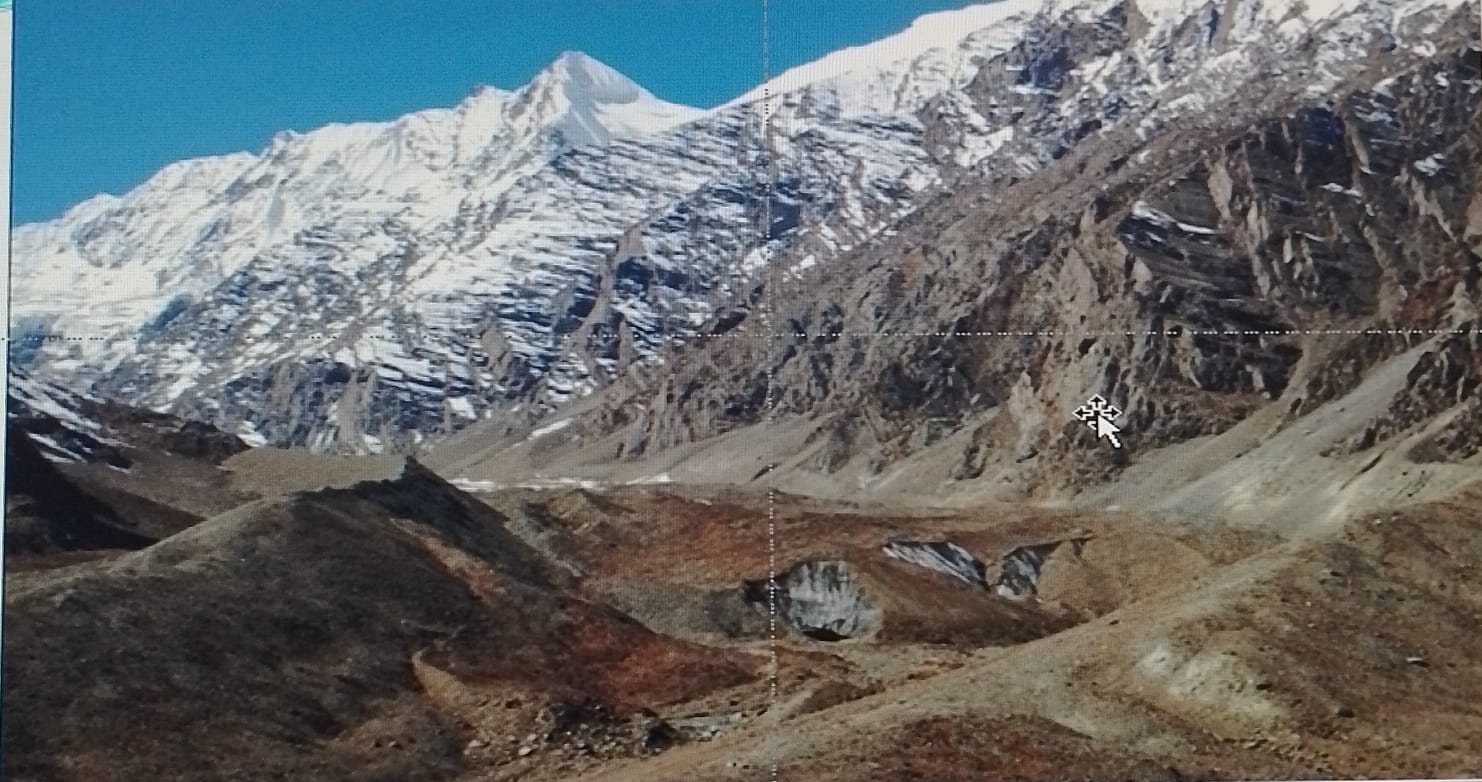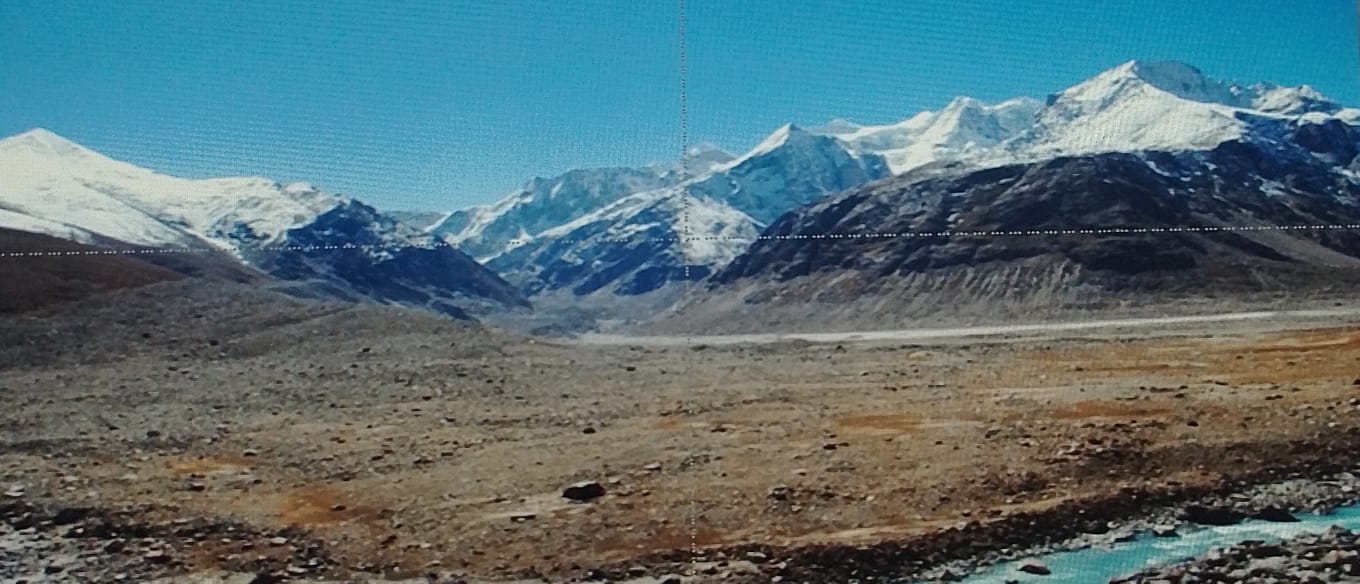Glaciers are Retreating, Giving rise to New Ice-free Ecosystems... This landmark study is published in Nature recently.
New Delhi/ Shimla: The retreat of glaciers due to global warming is transforming once barren mountain and high-latitude regions into ice-free thriving ecosystems.
This change is crucial to understand as it reveals how climate change impacts these new environments and their living communities.
But the good news is that landlocked Batal-Bara Shigri glacier site, a source of the Chandra river, which also figures in this global study, is here to stay for longer time as it is located in the cold desert of Chandra Basin..
In a groundbreaking study published in the prestigious journal *Nature*, 39 top glaciologists from around the world examined 46 different glacier retreat sites across five continents, from the equator to polar regions.
They looked at soil properties, climate, plant and animal life, and overall biodiversity.
Between 2014 and 2020, they collected 1,251 soil samples from 46 proglacial landscapes (areas just in front of glaciers), with sites ranging from 1 to 483 years since the glaciers retreated.

Dr. Milap Chand Sharma, professor of geomorphology at JNU, New Delhi was one among 39 top researchers involved in this global study.

He along with Dr Pritam Chand, his student, studied the Batal-Bara Shigri glacier site in Himachal Pradesh, the largest glacier in the region.
He noted the importance of having records from the supposed Little Ice Age remains for recent reconstruction.
Dr. Sharma has also conducted plant succession studies at the Gangotri glacier, highlighting differences in ecological development due to varying climatic conditions in different glacier region of the Himalaya
The study found that as glaciers retreat, all environmental aspects change over time, with temperature playing a key role in soil nutrient buildup.
Bacteria, fungi, plants, and animals all increase in number as time goes on but at different rates.
Microorganisms quickly colonize new areas within decades, while larger plants and animals take longer.
Over time, as the environment becomes more suitable and complex interactions among living organisms develop, biodiversity increases.
Plants are particularly important as they positively influence all other components of biodiversity.
Three main processes drive the formation of these new ecosystems:
1. Habitat Filtering: The availability of suitable environments, like nutrient-rich soils, is crucial for community development.
2. Biotic Interactions: Relationships among different organisms help establish more complex communities.
3. Time: The longer the area has been ice-free, the more likely it is that different organisms will colonize it.
Researchers discovered that soil nutrients, especially nitrogen, accumulate faster in warmer climates, enhancing plant diversity.
Plant diversity, in turn, supports microbial diversity, which is influenced by soil pH.
Animal diversity increases with richer soil nutrients and higher plant diversity.
Dr. Sharma emphasized that human activities, such as traffic and prolonged camping at high elevations, contribute to additional aerosol and black carbon, accelerating glacier melting beyond the natural cycle.

He suggested banning prolonged camping in forests above 3800 meters as a policy measure.
The study highlights the need for ongoing monitoring of these newly exposed areas to understand better how they develop and manage them effectively.
The findings show that the processes shaping these ecosystems are similar across different climates, but time is consistently the most important factor driving biodiversity.
The retreat of glaciers is opening up new areas for life to thrive. The ecosystems are becoming more diverse and complex over time.
This happens due to suitable habitats, interactions among organisms, and the passage of time.
This study underscores the joint role of time, habitat formation, and biotic interactions in the evolution of these ecosystems.
The study finds that Plants form rich communities with bacteria and fungi, which diversify early and plateau after about a century.
Larger soil organisms, like springtails and earthworms, take longer to colonize due to dispersal limitations and habitat changes.
The long-term development of ecosystems results from the interplay between time, habitat, and biotic interactions.
Despite some limitations, such as incomplete sampling in subpolar regions and reliance on metabarcoding data, the consistency of the findings across diverse regions converted on the same conclusions.
The researchers say that future research should aim to harmonize metabarcoding with traditional data and investigate the role of vertebrates in these ecosystems.
Efficient monitoring of proglacial ecosystems requires interdisciplinary approaches that integrate ecological, genetic, and environmental data.
Comprehensive field studies and advanced modeling will help anticipate structural changes and the evolution of ecosystem services, they say.















